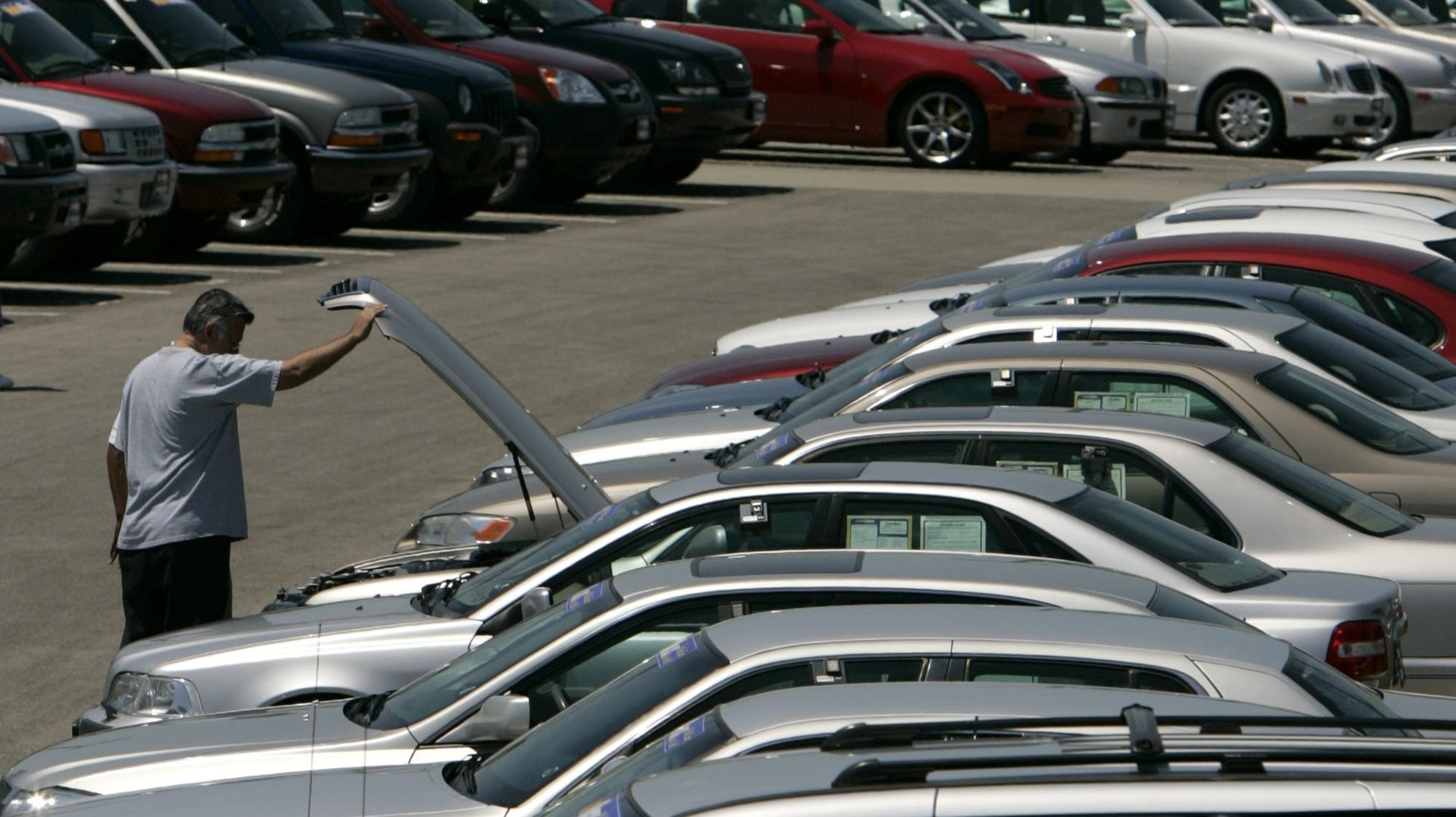Covid-19 has stacked the deck in favor of the US used car market
The used car is shedding its slightly unsavory stigma.


The used car is shedding its slightly unsavory stigma.
Since the coronavirus struck, the global market for new cars has collapsed. Sales have fallen 20%—the equivalent of the entire European car market disappearing in a matter of months, according to global consulting firm AlixPartners. But used car sales have barely slowed, at least in the United States.
Dealers in the US, scrambling to find new inventory, have seen prices bounce back to 2019 levels after a 20% drop this spring, says Scott Underhill of the vehicle fleet leasing company Donlen. In June, wholesale used car prices are forecast to hit a record $14,600 in the US.
It seems that Covid-19 has stacked the deck in favor of the US used car market. And once the pandemic subsides, many more Americans may make the shift to used permanent.
The market for used cars has never been small: They account for 40 million of the 57 million or so changing hands each year in the US, according to automotive market intelligence firm Edmunds. That share has risen since 2015 from 38.8 million to 40.9 million.
A few changes have driven a new set of buyers to choose used over new, says Edmunds’ Ivan Drury. Dealers offer “certified” used vehicles that give customers enhanced warranties, roadside assistance, and deferred payments once reserved for the new car lot. “You get the benefits of a new car at the price of a used car,” says Drury.
And buyers have more options than before. Leasing, once restricted to luxury cars, now accounts for about a third of all new car sales, which has injected millions of lightly-used vehicles into the market. Car rental firms are also offloading vehicles through their own dealerships, offering low prices, modest mileage, and well-maintained vehicles.
The pandemic seems to be pushing these existing trends into overdrive.
Economic uncertainty, historically, has driven buyers to go used. First-time buyers are also emerging as essential workers and transit riders opt for personal vehicles. And with new car options limited by factory shutdowns, it’s easier to justify a used purchase.
With all the extra interest, the supply of used vehicles in the US is tight, driving prices to those historic highs. Drury says he just sold his 2016 Dodge Challenger, a manual-transmission sports car, for $2,000 higher than it was valued at two months ago.
But inventory is likely to surge later this summer. Backlogs built up over the last few months as auction sites were closed, repossessions were deferred during the pandemic, lease-holders kept their cars, and trade-ins for new cars stalled out. At the same time, rental car bankruptcies such as Hertz now are working through way through the court system. Once the summer travel season hits, rental companies will be offloading many of those cars to sales lots.
Buying used cars might become easier, too. Contactless buying has found a home in dealerships across the US, along with online shopping. Some startups, like Carvana, provide buyers with direct deliveries and seven-day return policies.
When a flood of used inventory arrives this fall, Americans may find the most desirable car was once someone else’s.